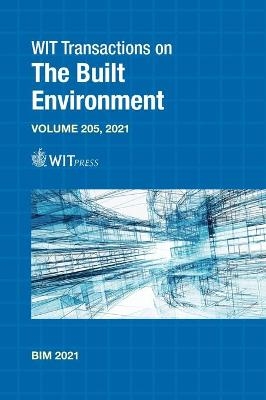
Building Information Modelling (BIM) in Design, Construction and Operations IV
WIT Press (Verlag)
978-1-78466-441-1 (ISBN)
The modern construction industry and built environment disciplines have been transformed through the development of new and innovative BIM tools and techniques. These have fundamentally altered the manner in which construction teams operate; the processes through which designs are evolved; and the relationships between conceptual, detail, construction and life cycle stages.
BIM is essentially value-creating collaboration throughout the entire life-cycle of an asset, underpinned by the data attached to them. BIM has far and reaching consequences on both building procurement and infrastructure. This recent emergence constitutes one of the most exciting developments in the field of the Built Environment. These advances have offered project teams multi-sensory collaborative tools and opportunities for new communication structures.
The included papers cover such topics as: BIM and sustainability; Advanced BIM platforms; BIM and automation in construction; BIM and cultural heritage; Digital twin and artificial intelligence for buildings and infrastructure.
Section 1: BIM and sustainability
Green building design and assessment with computational BIM: The workflow and case study; Experience in the field of sustainability enhanced construction; Towards sustainable buildings using building information modelling as a tool for indoor environmental quality and energy efficiency
Section 2: Advanced BIM platforms
Virtual reality stories for construction training scenarios: The case of social distancing at the construction site; Changing learning landscape: From CAD to BIM and beyond; Implementing common data environments in architectural technology studies; Concept development for adopting 5D BIM in small and medium-sized enterprises of the AEC industry; Implementation of Autodesk Revit® in design of water treatment plants
Section 3: BIM and automation in construction
Visual education on construction sites using BIM; Opportunities and challenges in the implementation of building information modelling for prefabrication of heating, ventilation and air conditioning systems in small and medium-sized contracting companies in Germany: A case study; BimPO: A generative parametric technique for building envelope design; Application of generative design for structural optimization at the conceptual design phase
Section 4: BIM and cultural heritage
HBIM work methodology applied to preventive maintenance: A state-of-the-art review; Reexamining the Old Depot Museum in Selma, Alabama, USA; BIM and cloud platforms for facility management of Roman temple “Hadrianeum”: Chamber of commerce in Rome – Digitalization as a solution for historical heritage management; Retrospective study on the iterative methods of architectural visualization from the Neolithic to the digital building information model; Study on factors affecting BIM implementation in European renovation projects
Section 5: Digital twin and artificial intelligence for buildings and infrastructures
Digital twin for critical infrastructures: The Ventotene Island Port case study, Italy;
Actionable framework for city digital twin-enabled predictive maintenance and security management systems; Complex works project management enhanced by digital technologies
| Erscheinungsdatum | 30.12.2021 |
|---|---|
| Reihe/Serie | WIT Transactions on The Built Environment ; 205 |
| Verlagsort | Southampton |
| Sprache | englisch |
| Maße | 178 x 254 mm |
| Themenwelt | Informatik ► Weitere Themen ► CAD-Programme |
| Technik ► Bauwesen | |
| ISBN-10 | 1-78466-441-3 / 1784664413 |
| ISBN-13 | 978-1-78466-441-1 / 9781784664411 |
| Zustand | Neuware |
| Haben Sie eine Frage zum Produkt? |
aus dem Bereich


